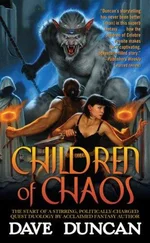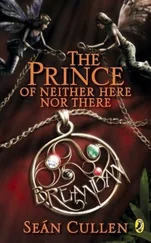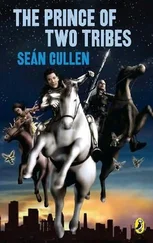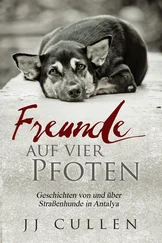The trauma specialists disagreed. These kids had been raised in a western mentality, they argued: real men fend for themselves; tears are for weaklings; therapy is a joke. “Frank, you are the key,” one counselor advised him. “You’re an emotional person, you need to show those emotions. If you try to hold your emotions inside, you’re going to set the image for other people.” The boys, in particular, would be watching him, DeAngelis felt. They were already dangerously bottled up. “Frank, they need to know it’s all right to show emotion,” the counselor said. “Give them that permission.”
The students were awaiting his appearance, and when he walked in, they started chanting the school’s rallying cry, which he’d last heard at the assembly before the prom: “We are COL-um- BINE! We are COL-um- BINE! ” Each time they yelled it more loudly, confidently, and aggressively. Mr. D hadn’t realized until he heard them that he had been longing to draw strength from them, too. He’d thought he was there just to provide it. “I couldn’t fake it,” he said later. “I walked on that stage and I saw those kids cheering and the tears started coming down.”
This time he decided to address the tears. “Guys, trust me, now is not the time to show your manliness,” he told them. “Emotion is emotion, and keeping it inside doesn’t mean you’re strong.”
That was the last time Mr. D worried about crying in public.
____
The big question facing the school was how to finish out the year. These kids needed to get back together fast. But the cops weren’t going to open the building for months. The administration decided to restart classes a week later at nearby Chatfield High School, Columbine’s traditional rival. Columbine would take over the school in the mornings, and Chatfield would resume use in the afternoons. Classes would be shortened for both groups until the end of the school year.
The long-term solution was trickier. Some people suggested that the building be demolished; some parents insisted that their kids would never set foot in that murder scene again. But others pointed out that the psychological blow of losing their high school entirely would be much worse. The Rocky Mountain News led its Thursday edition with a letter from the publisher stating, “If students, teachers and parents feel there is no way they can return to the classrooms of Columbine, the Denver Rocky will lead the charge to raise the funds to build a new school and urge legislators to help. If they decide that they do not want to be driven from their school, we will support the community in rebuilding the campus.”
____
Reverend Bill Oudemolen began preparing two funerals. John Tomlin and Lauren Townsend had been faithful members of the Foothills Bible Church. The pastor walked through Clement Park and sniffed the air. Satan. The pastor could smell him wafting through the park. It was an acrid odor—had it been a little stronger, it might have singed his nose hairs. The Enemy had swept in with this madness on Tuesday, but the real battle was only now under way.
“I smell the presence of Satan,” Reverend Oudemolen thundered from the pulpit Sunday morning. “What we saw Tuesday came from Satan’s home office. Satan had a plan. Satan wants us to live in fear in Littleton. He wants us to see black trench coats or people in Goth attire and makeup and here’s what he wants us to feel: Look how powerful and scary Satan is! ”
He’d watched an ABC special examining the fallout in West Paducah, Kentucky, thirteen months after its school shooting. West Paducah was still riven with hostility, Oudemolen told his congregation. “I know what Satan wants Littleton to look like in thirteen months,” he said. “He wants us to be angry. Satan wants us to stay right here, with uncontrollable grief. He wants evil to be repaid by evil. He wants hatred to be repaid by hatred. Satan has plans for Littleton.”
Cassie Bernall’s pastor, George Kirsten, charged the same culprit. This was so much more than two boys with guns or even bombs, in their eyes. This was spiritual warfare. The Enemy had taken the battlefield in broad daylight in Jeffco, and Reverend George Kirsten was eager to see Christ reappear to smite him. When Kirsten addressed his congregation at West Bowles Community Church, he likened Cassie to the martyrs calling out to God at the onset of the Apocalypse in the book of Revelation: “How long? How long will it be until my blood is avenged?” he cried.
It’s a pivotal scene Reverend Kirsten was invoking. Immediately after the appearance of the four horsemen, the fifth seal is broken and all the Christian martyrs since the beginning of time appear under the altar, pleading for enemy blood to be spilled in return. Shortly thereafter, all true believers are raptured and the Apocalypse commences.
Reverend Kirsten happened to be teaching Revelation—one chapter a week—to his Bible study group at West Bowles. He believed, as they did, that the great signs of the Apocalypse were already under way and the moment might be at hand.
____
Reverend Don Marxhausen disagreed with all the riffs on Satan. He saw two boys with hate in their hearts and assault weapons in their hands. He saw a society that needed to figure out how and why—fast. Blaming Satan was just letting them off easy, he felt, and copping out on our responsibility to investigate. The “end of days” fantasy was even more infuriating.
Marxhausen had managed to reach the kids at the Light of the World assembly. He led the large Lutheran congregation near Columbine, and for years he’d headed up a council of mainline Protestant clergy— mainline being the common term for the large, moderate denominations such as Presbyterians, Episcopalians, Methodists, and Baptists outside the Southern Baptist Convention. Marxhausen was only forty-five, but widely regarded on as the old wise man of the western suburbs. Mainliners were outnumbered by the Evangelicals, and probably even the Catholics, in Jeffco, but they maintained a strong presence, and Marxhausen’s thousand-seat church was packed solid every Sunday.
Most of the mainliners and the Catholics were averse to pinning the Columbine tragedy on Satan, but they were determined not to fight about it. Local ministers agreed very quickly that they needed to pull together and put factional bickering aside.
Barb Lotze faced her first test barely twenty-four hours after the massacre. She arranged a huge prayer service for Wednesday evening at Light of the World Catholic Church, where she served as youth pastor. Students from all faiths had been invited, and every pew was packed. She wanted to make them all feel welcome.
Midway through the service, an excited youth minister from an Evangelical church approached Lotze about performing an “altar call”—the practice where new or renewed believers are summoned forward to be born again. It was a decidedly un-Catholic ritual, and it seemed like an inappropriate time, but Lotze was determined to establish some sort of reciprocity with the Evangelical churches.
She reluctantly agreed.
The young pastor rushed to the microphone and proclaimed the power of Jesus. Who was ready to accept Jesus Christ as their own personal savior? he cried.
No one moved. He was astonished.
“Nobody?” he asked.
He sat down, and the audience moved on. “They just want to be hugged,” Lotze said. “They want to be loved, told that we’re going to get through this together.”
____
The kids kept pouring into the churches. What began Tuesday night as a means to escape from their parents and find each other quickly became a habit. Night after night they returned to the churches in vast numbers—kids who had not seen an altar in years. For some it was a conscious choice to look to God in desperation, but most said it was just a place to go.
Читать дальше







